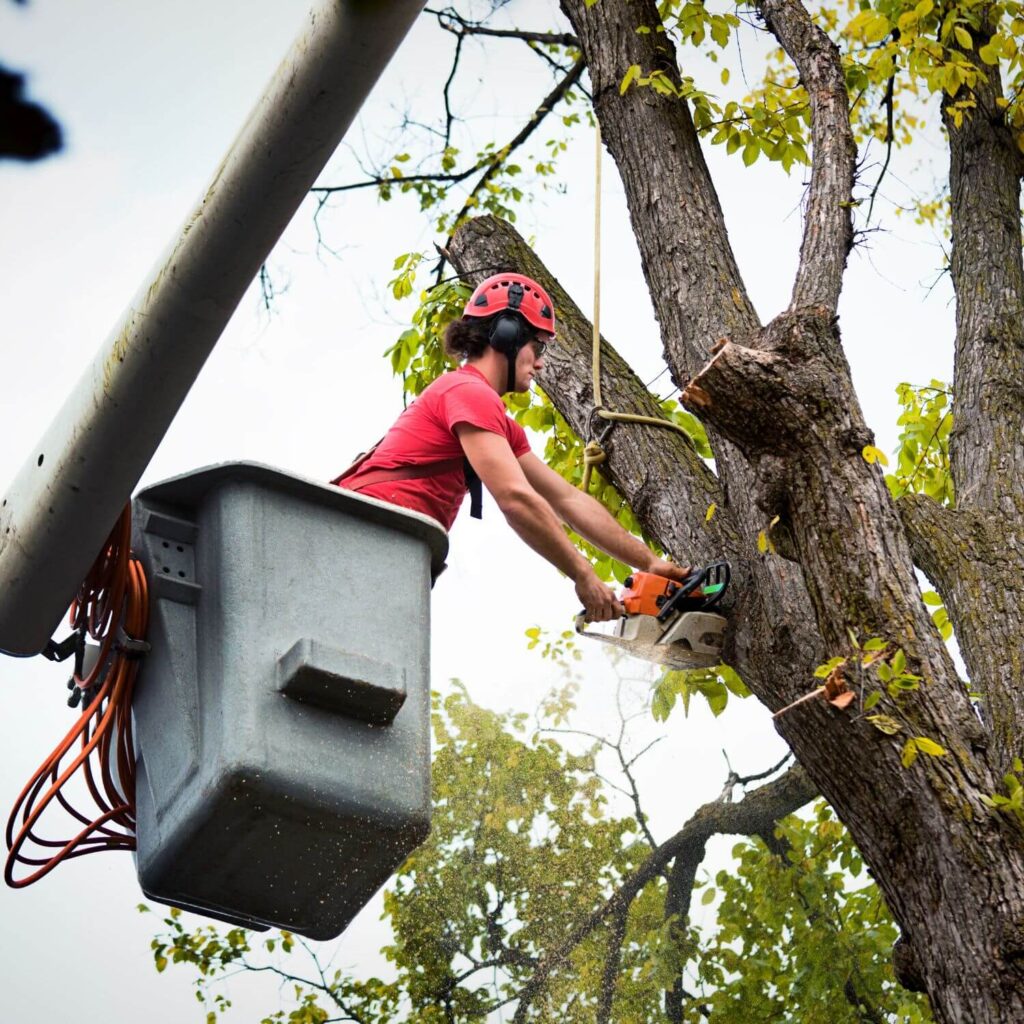When a tree falls on your property, it can create a mess of questions along with physical debris. Who exactly is responsible for removing that fallen tree? Is it you, your neighbor, the city, or someone else entirely? This seemingly simple question often leads property owners into a tangle of local regulations, property laws, and insurance policies.
We’ll clear away the confusion and provide a straightforward guide to determining responsibility for fallen tree removal. If you’re dealing with a recent tree fall or simply want to be prepared for future scenarios, the rules we share today can save you time, money, and potential legal headaches.
So, Who’s Responsible When a Tree Falls?
Determining who’s responsible for cleaning up and covering the costs of damage from a fallen tree can be trickier than you might expect. The answer often depends on several important factors.
First and foremost, we need to consider why the tree fell in the first place. Was it an act of nature or a result of neglect? This distinction can make all the difference when determining liability.
Natural Causes
Sometimes, Mother Nature just has her way. High winds, heavy snow, hurricanes, or other extreme weather events can topple even the healthiest of trees. In these cases, it’s generally considered an “Act of God.” This means that the tree’s fall wasn’t anyone’s fault, and responsibility usually falls to the property owner where the tree landed, not where it originated.
For example, if your neighbor’s perfectly healthy tree gets uprooted during a storm and damages your garage, your homeowner’s insurance would typically cover the damage. It might seem unfair, but that’s often how it works with natural disasters.
Negligence
On the flip side, if a tree falls due to poor maintenance or neglect, the story changes. This is where things can get a bit ugly. Negligence can take many forms:
Lack of proper trimming or pruning: Overgrown branches can make a tree top-heavy and more likely to fall.
Ignoring signs of disease or pest infestation: A weakened tree is a dangerous tree.
Failing to remove a dead or dying tree: These are accidents waiting to happen.
If a tree falls due to negligence, the owner of the tree could be held responsible for damages and removal costs. So, if your neighbor has been ignoring the dead tree in their yard, and it falls on your property, they are liable for the damages and cleanup.
It’s worth noting that proving negligence can be difficult. You’d need to show that the tree owner knew (or should have known) that the tree was a hazard and failed to take reasonable steps to address the issue.
Who Owns The Tree?
If you live close to your neighbors, it’s not uncommon to look out your window and wonder, “Is that my tree, or theirs?”
Here’s the lowdown on figuring out who owns what in the world of backyard forestry:
It’s all about the trunk. Think of the tree trunk as the tree’s home address. Wherever that trunk is rooted, that’s who owns the tree. Pretty straightforward, right?
If the trunk is growing on your side of the property line, congratulations! You’re a tree owner. It doesn’t matter if the branches are reaching over to your neighbor’s yard or if the roots are sneaking under their fence. As long as that trunk is on your turf, it’s your tree.
If the trunk is planted firmly in your neighbor’s yard, it’s their tree. Even if you’re the one raking up all the leaves every fall, ownership goes to wherever the trunk calls home.
Now, what happens when a tree decides to be difficult and grows right on the property line? In this case, you and your neighbor become co-owners of the tree. It’s like sharing custody but for plants. You’ll both need to agree on decisions about the tree’s care and any potential removal.
Are Fallen Trees Included in My Homeowners Insurance?
Insurance companies typically look at two main factors when deciding whether to cover fallen tree incidents:
Insurance companies typically look at two main factors when deciding whether to cover fallen tree incidents:
Why did the tree fall?
What kind of damage did it cause?
Let’s break it down:
Acts of Nature
Good news, if Mother Nature decided to play bowling with your trees during a storm, your insurance has likely got your back. Most homeowners’ policies cover tree removal and related damages if the fall was due to natural causes like wind, lightning, or heavy snow. This usually applies whether it’s your tree or your neighbor’s tree that fell on your property.
Interestingly, if a tree falls on a shared fence, it’s common for your insurance to cover 50% of the damage, with your neighbor’s insurance picking up the other half. It’s like a neighborly split, courtesy of your insurance companies.
Human Error or Neglect
If the tree fell because it was dead, diseased, or poorly maintained, your insurance won’t be so generous. Insurance companies expect homeowners to take reasonable care of their trees. If you’ve been ignoring that leaning oak or those termite-infested branches, you will find yourself footing the bill for any damage or removal costs.
What’s Covered
Typically, if your claim is approved, insurance will cover:
- Removal of the tree from structures
- Repairs to damaged buildings or other structures
- In some cases, removal of debris from your yard
What’s Often Not Covered
- Removal of fallen trees that didn’t hit a structure or block a driveway
- Preventative tree removal (like taking down a tree that looks like it might fall)
- Damage to your car (that’s usually covered under auto insurance)
Remember, policies can vary widely between companies and even between different plans from the same company. It’s always a good idea to review your policy or chat with your insurance agent to understand exactly what’s covered in your specific situation.
If a Neighbor’s Tree Falls on My Property, Who’s Liable?
When your neighbor’s tree ends up on your property, you might wonder who’s responsible for cleaning it up and covering any damage.
Most of the time, the answer is surprisingly simple:
When You’re the One Responsible
If your neighbor’s tree falls on your property due to unavoidable circumstances like a storm or other natural events, it’s actually your responsibility to deal with it. You’ll need to:
- Contact your homeowner’s insurance company
- File a claim for the damage
- Arrange for the tree removal
The good news is that your insurance will likely cover the costs associated with removal and any damage to your property. It’s considered an “act of nature,” so you’re generally protected.
Your Neighbor’s Responsibility
If the tree fell because your neighbor neglected to take proper care of it, the responsibility shifts to them. This could include situations where:
- The tree was clearly dead or diseased
- Your neighbor ignored obvious signs that the tree was unstable
- They failed to maintain the tree properly over time
In these cases, your neighbor will be held liable for the damages and responsible for removal costs. You might need to provide evidence of their negligence, like previous complaints about the tree’s condition or expert assessments of the tree’s health before it fell.
If negligence is involved, the tree owner has to foot the bill. It’s always a good idea to maintain open communication with your neighbors about potentially hazardous trees to prevent these situations from occurring in the first place.
Who Deals with It If a Public Tree Ends Up on My Yard?
If a tree is rooted in public land or a community falls onto your property, you are not responsible for dealing with this wooden trespasser. Your local government steps in to handle the removal of the fallen tree, covering all the costs associated with getting it off your land. You won’t have to worry about hiring a tree service or footing the bill for the cleanup.
However, if the tree caused damage to your property – say, smashing through your fence or leaving a dent in your roof – that’s where your role comes in. You’ll need to turn to your homeowner’s insurance to cover repair costs. It’s wise to document everything and contact your insurance provider promptly.
Can I Tackle Tree Removal Myself?
It’s not generally advisable to go the DIY Route when it comes to dealing with fallen trees on your own. Tree removal is a complex and potentially dangerous task that’s best left to professionals. Here’s why:
Safety Risks
Removing a tree involves working at heights, using heavy equipment, and dealing with unpredictable falling branches or trunks. Without proper training and safety gear, you could seriously injure yourself or others.
Property Damage
An incorrectly felled tree can cause significant damage to your home, vehicles, or neighboring properties. Professional arborists know how to control the tree’s fall and protect surrounding structures.
Legal issues
In many areas, tree removal requires permits. Professionals are familiar with local regulations and can ensure the job complies with all legal requirements.
Hidden hazards
Trees may have unseen structural issues or be intertwined with power lines. Professionals can identify these dangers and address them safely.
Proper equipment
Tree removal often requires specialized tools that most homeowners don’t own. Trying to use inadequate equipment can lead to accidents or incomplete removal.
Stump removal
After felling a tree, you’re left with a stump. Professional services often include stump grinding or removal, which requires additional specialized equipment.
Insurance
Professional tree services carry insurance to cover any potential damages or injuries. If you attempt removal yourself, you may be liable for any accidents or property damage.
Time and effort
What might take professionals a few hours could take you days, especially if you’re inexperienced.
Instead of risking your safety and potentially causing costly damage, it’s best to hire a certified arborist or professional tree removal service. They have the skills, equipment, and insurance to do the job safely and efficiently. While it may cost more upfront, the peace of mind and professional results are well worth the investment.

